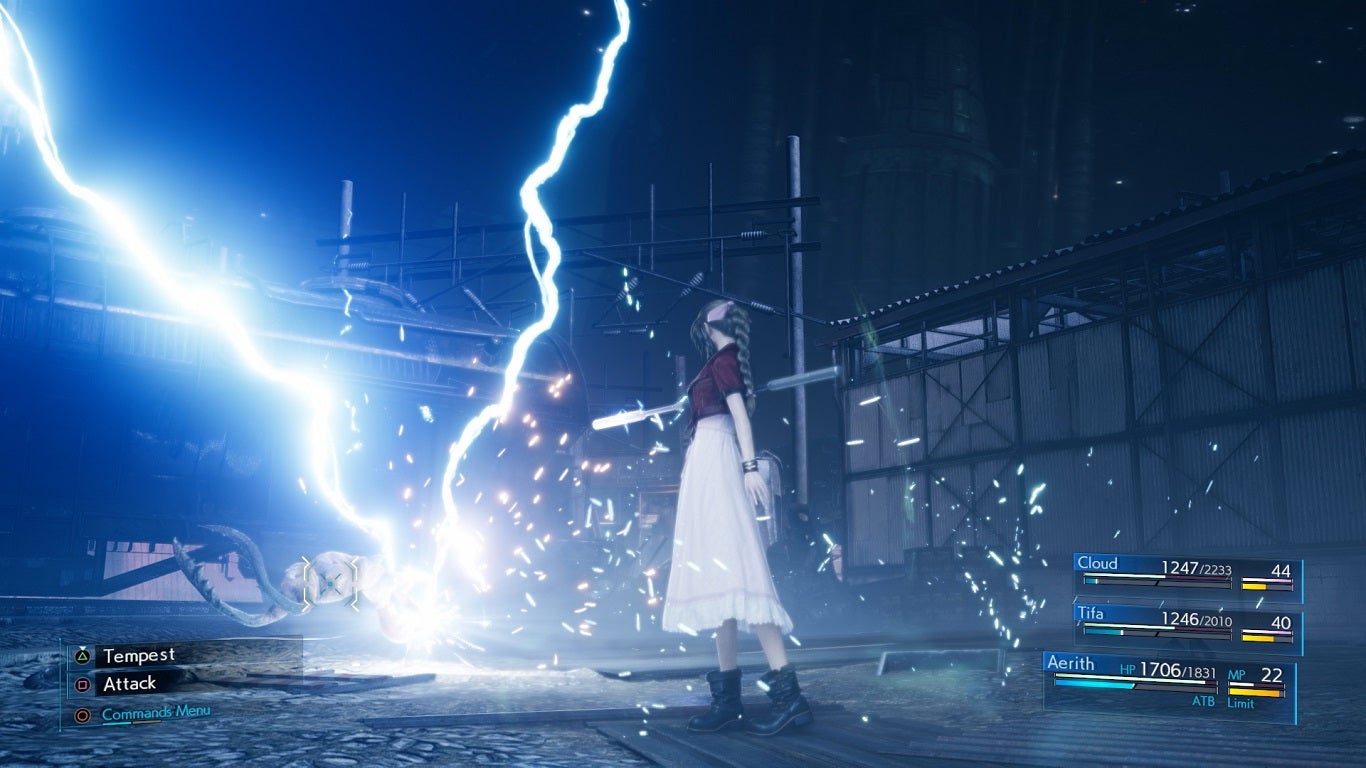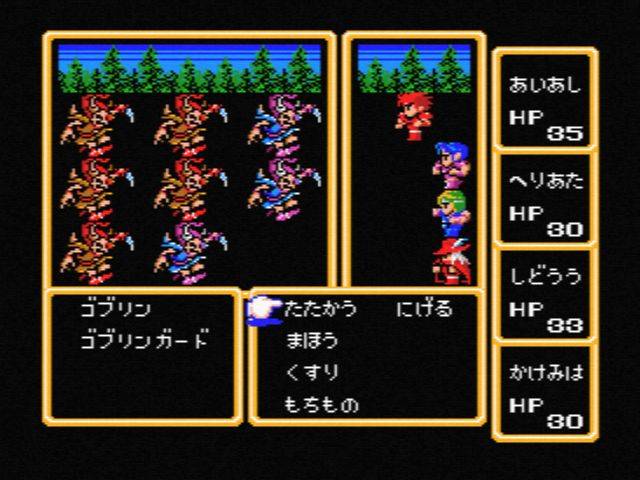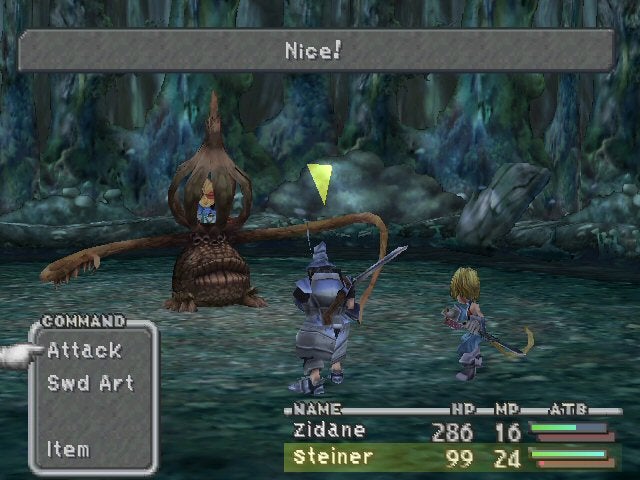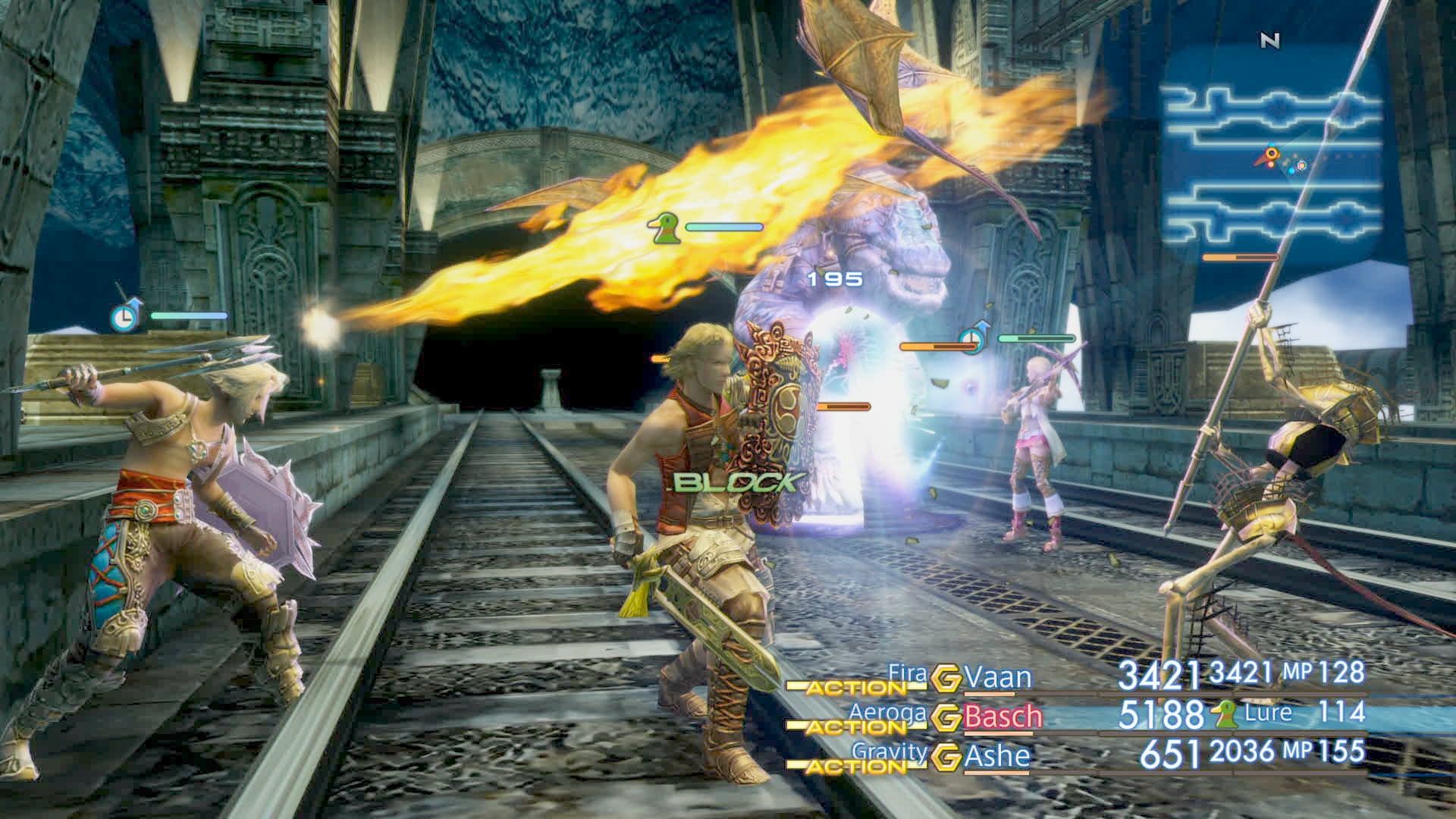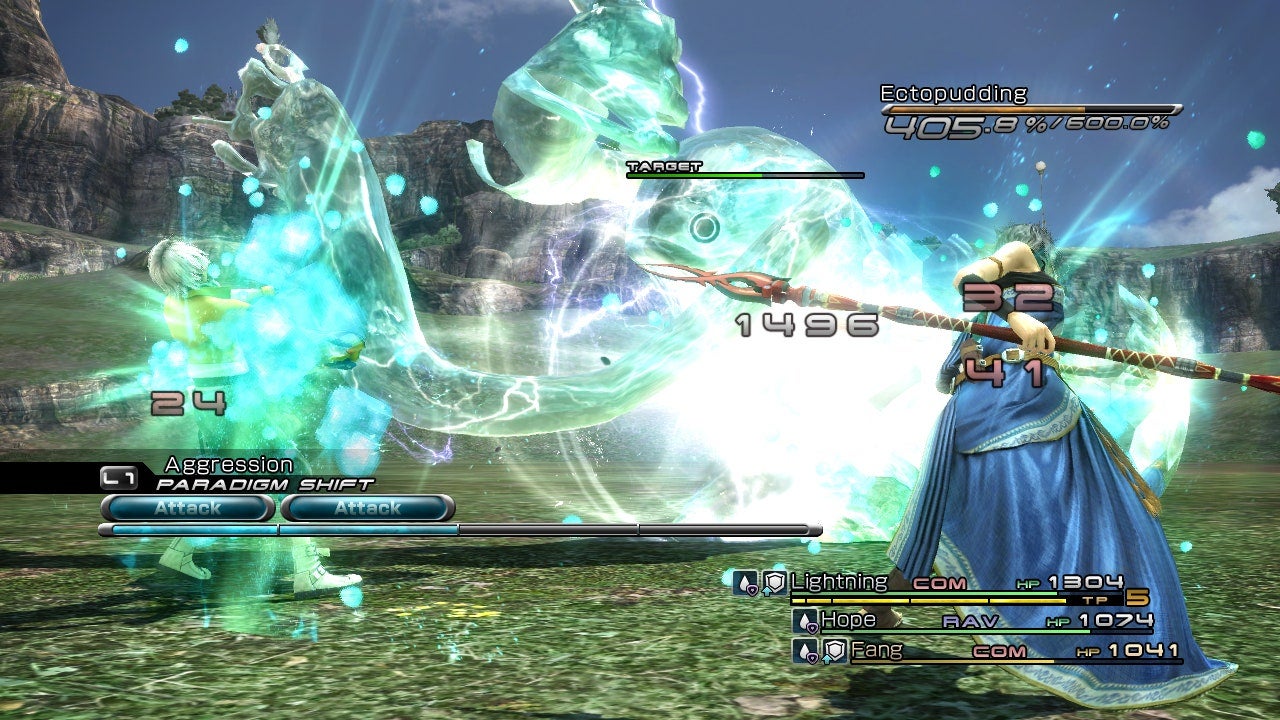We see this, of course, in the Final Fantasy 7 Remake, an exquisite but flawed attempt to blend the rhythms of the old FF7 battle system with the action movie choreography that has long hypnotised the likes of Motomu Toriyama, FF7R’s co-director. Where battle in Final Fantasy on PS1 resembles a quaint theatre production, with characters lining up against painted backdrops (FF9’s intro actually concludes with a brawl on-stage), battle in FF7R is a sprawling, hyperactive mess of flying limbs and blades, streaking projectiles and screen-whiting detonations. Open a menu, however, and you can plunge the proceedings into slow motion, which is both a tactical aid and a window back through history upon the stately pantomimes of Final Fantasies gone by. The gorgeously dragged-out motions of the remake’s cast echo the long-winded combat animations that gave Final Fantasy on PS1 so much of its charm - the camera swooping around the active character as they channel magic or prepare to swing. In the remake’s “Classic” mode, your involvement is restricted to that window of slow-mo - outside of it, characters move and act by themselves. FF7R’s curious hybrid approach isn’t, for me, a patch on the old school, but I’ve always been fascinated by Square Enix’s attempts to outgrow the battle systems of the classic games without losing touch with them entirely. Specifically, I’m fascinated by the way all these implementations of combat serve as reworkings of the concept of time. Let’s step away from Final Fantasy for a second and think about what time is, and how our understanding of it has changed in the past few hundred years. According to the classical Newtonian worldview that prevailed up till around the 19th century, time is a constant, linear progression that sweeps everything else along with it, a river flowing from past through present into future. Today, we know that time is far more nebulous, at once entwined with space such that larger masses actually slow down time nearby, and at least partly the product of our brains, external methods of timekeeping and various social conventions. We might revert to the linear notion of time in everyday speech for convenience’s sake - I’ve done so in this very paragraph. But we understand that time is to some degree a fiction, continually invented by those ostensibly “caught in its flow”, and in particular by artists such as the creators of videogames. Take the turn-based battle system used by the original Final Fantasy, way back in 1987. Its modelling of time may only reflect the computing capability of its era, but there’s something magical about it, something later games have lost. A fundamental point about turn-based battle is that time isn’t measured in seconds, but actions. Time does not simply pass during such clashes; rather, it passes when a character does something. There is no steady onward movement in the Newtonian sense - your heroes and their opponents must make choices in order for the present to become past. Time is, in fact, a collaboration between these warring parties, necessarily predicated on an exchange of blows. The player, naturally, sits outside this representation of time, which makes combat both less and, in a way, more overwhelming. It means that we’re able to lean back and consider our strategies, however close-fought the encounter. But it also allows us to spend eternities inside the instant before a killing blow, a miraculous escape. Towards the end of a gruelling boss fight, when both your tank and your healer character are running on fumes, time feels less like being swept along by a river as hopping between boulders above a roaring waterfall. These intervals are intriguingly reminiscent of accounts of near-death experiences, where survivors talk about time “slowing down”. When you’re conscious of danger, your amygdala - a part of the brain that processes emotions and some aspects of recollection - becomes more active, layering up additional memories as though stacking attack commands. Thus, in hindsight you might feel as though your brain had gone into overdrive, packing more detail into every second. The critical inspiration for turn-based battle in Final Fantasy wasn’t a near-death experience, however. It was another type of game. According to Hiroyuki Ito - the legendary debugger turned project director who dreamt up Active Time Battle - the system owes a debt to American football, with its symmetrical team formations and pre-planned plays. Time is managed very carefully in American football: there are elaborate rules about starting and stopping the play clock, and exploiting those rules - running down the clock when you’re ahead, for example - may be the key to winning. The tyranny of the clock is also a source of tension and excitement for audiences; it lends the exercise of slamming helmets together a potent narrative structure. Think of those bits in sport movies where the underdog team has a handful of seconds to snatch victory from the jaws of defeat. Such crescendos are typically preceded by a “time-out”, used in real-life matches to break the momentum, giving players a chance to confer and psyche themselves up for that last-ditch comeback. You could argue that turn-based battle is essentially a series of time-outs. They’re opportunities to strategise, yes. But they also create a distinct and engaging dramatic tempo. So how does time as the taking of turns compare to “active time”? For the mold-breaking Final Fantasy 4, Ito looked to another kind of sport, Formula One racing. A basic principle of racing is that while you are in competition, you’re seldom in direct contact. Each participant is essentially alone against the clock, though you are travelling in parallel. Under Active Time Battle, time still unfolds according to the interactions between characters, but each character or enemy has their own looping “internal clock”, typically determined by that character’s initiative or speed stat, which decides how often they can act. Those clocks tick away independently of other characters, unless you meddle with them using spells like Haste, and the result is that time is no longer woven together by the opposing parties, but presented as a set of loosely harmonised solo melodies. When playing in Action mode, the clocks don’t even stop when you’re navigating menus, which means that an enemy might sneak in a fatal blow while you dither over the options. It’s still very laidback next to what we call “real-time” combat, in which time is portrayed as passing of its own accord, but it’s fluid and relentless in a way that is both more stressful and harder to put down. Another integral ATB feature, fleshed-out over the course of the SNES era, is that actions have different durations based on their tactical impact. Thus, casting a doomsday spell might cost you the fight if an enemy is able to sneak in a quick knife blow while your wizard is warming up. Formula One aside, ATB sprang from a desire for greater authenticity, as detailed in a 1992 patent which doubles as a pretty comprehensive bodying of turn-based battle systems. “[A game] in which action takes place in turns is a static game and lacks realism,” it witheringly notes. In a game using ATB, by contrast, there is no “interruption in the flow of time of the game”. Appeals to realism always ring hollow to me, even in games where you can’t conjure fire demons from thin air, and you could argue that, in reverting to the metaphysical model of a singular “flow”, ATB dilutes the interest of time in Final Fantasy. It is, however, undeniably more exciting to play, and it has broader implications for the series’ handling of characters. Where the series’ older turn-based battling had you thinking of your party as a block, ATB obliges you to think of party members as individuals, dancing to their own beats. This was an appropriate development, given the increasing elaborateness of Final Fantasy’s writing. In FF1, you guide the anonymous, featureless Warriors of Light, hunks of marble that are sculpted through confrontation. In Final Fantasy 4, the first game to employ ATB, party members have names, biographies and preset combat classes. The shift to 3D character models on PS1, together with Square’s mounting Hollywood aspirations, saw Final Fantasy dispensing with explicit class labels in favour of defining playstyles through personalities. Final Fantasy 7’s Aerith may resemble a White Mage, but her strengths and weaknesses are extensions of her behaviour outside of battle. They reflect who, rather than what she is. Final Fantasy 9, meanwhile, has a lot of fun evoking the old class labels in order to subvert them: Steiner, the game’s knight in shining armour, is a hapless buffoon. The intriguing thing about the single player Final Fantasies after FF9 is that they pull away from this emphasis on individuals, moving deeper and deeper into real-time combat territory in an apparent quest for ever-greater fluidity. The odd one out is Final Fantasy 10, a transition game which essentially gives you ATB with the heat turned down. Characters still have different clock speeds, but those differences are represented via frequency of turns rather than the ATB gauge - each character’s portrait joining a queue on the right to indicate when they can act. Actions still have different durations, and in a pleasing flourish, you can preview the effects of this by moving the cursor between commands, which shuffles portraits up and down the queue. It’s an elegant marriage of new and old, and as such, more satisfying than it is exhilarating. Final Fantasy 12, by contrast, is a brilliant eccentric. One of this troubled project’s key aims was doing away with the series’ infamous randomly occurring battles and moving to more of an MMO template, with enemies visible in the field. This desire to avoid interruptions also describes the battle system itself, which lets you configure party member AI as a set of stacked if/then commands or “Gambits”. While you can open a menu to issue commands while exploring the game’s MMO-ish open world, pausing each character’s ATB clock, the safer approach is to set up Gambits so that characters take care of all the decision-making for you. You might program your party’s mage to cast AOE spells when there are more than three foes in view, but only if nobody needs healing first. While engrossing, this system creates a feeling of growing displacement from FF12’s otherwise lovable cast of urchins, princesses and disgraced knights. The more effective your Gambits, the more you are removed from the cut-and-thrust, and the fewer the breaks in the rhythm created by overlapping ATB bars. The mark of ultimate success is that the player - the greatest constraint upon the unfolding of the game’s time - becomes disposable. Go make a cup of tea, why don’t you? Though sumptuous visual presences enlivened by crunchy, olde worlde writing, FF12’s characters also come to seem interchangeable because you can tinker with their clockwork so extensively - an impression reinforced by the game’s formless License Board customisation system, which in its original guise, allowed every character to master every skill. Final Fantasy 13 also distances you from the people in your charge, but it restores something like the ambience and tempo of a classic Final Fantasy brawl, with combat occurring in separately loaded arenas. As in FF12, you directly control one character at once while the AI handles the rest, but your control over AI states is more immediate, closer to FF10-2’s sensational wardrobe changes than fiddling with Gambits. Your only way of altering the abilities and tactics available to other party members is to switch “paradigms”, which are unlockable, whole-party bundles of AI routines and abilities. This spares you the stop-start micromanagement of a turn-based or ATB battle - rather than telling a support character like Vanille to patch everybody up individually, you can switch to the Medic paradigm and she’ll take care of the details - but brings back a little of the agency perhaps sacrificed by FF12. FF13 also gave us the deceptively simple Stagger mechanic, the genius of which is that it is essentially a fast-forward button. Pile on the right kind of punishment - lightning-based attacks for robots, for example - and you’ll eventually stun the target and multiply the damage they receive. Given some elementary thought, this lets you accelerate the downfall of enemies who might otherwise take tens of minutes to kill. Final Fantasy 13 received something of a pasting at release, and not without reason: it takes you 20 hours to really get into the meat of the battle system, and the less said about Hope, the better. But it looms large in the rear-view mirror. The game would spawn two spin-offs and inform the direction of both Final Fantasy 15 - originally a parallel “Versus” project - and FF7R. I’ve not played enough of FF15 to really assess its battle system (though I’ve written about its AI), but FF7R, for me, is a blunter piece of work. It’s a feast for the senses without doubt, but it founders on that awkward split between real-time, button-mashy combat and an arsenal of spells and abilities that are better targeted using menus. The game’s slow-mo menu selection feels more like an attempt to paper over the divide, than a seamless joining of the modern and the “Classic”. Still, I’ve relished playing the remake both for the liberties it takes with one of Square’s truly sacred stories, and for the thrill of seeing Final Fantasy reinvent time, once again.
